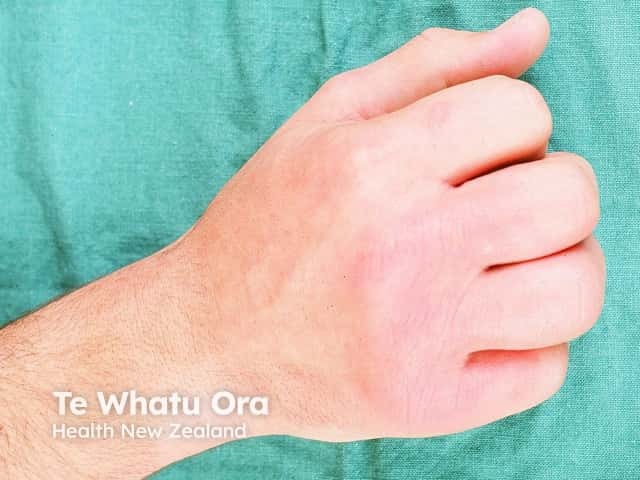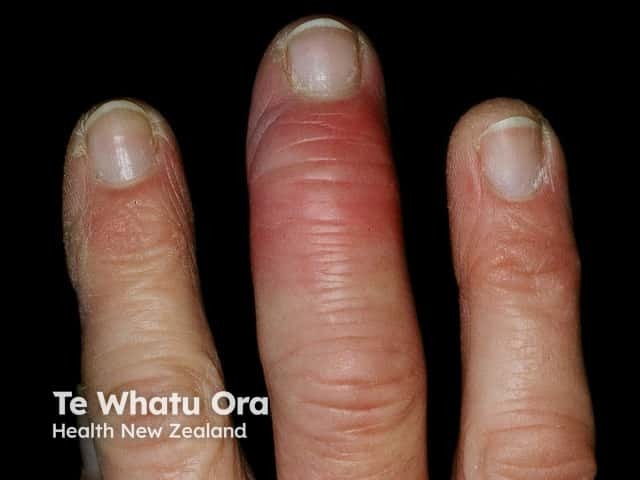Main menu
Common skin conditions

NEWS
Join DermNet PRO
Read more
Quick links
Erysipeloid is an acute bacterial infection of the skin and other organs caused by the microorganism Erysipelothrix rhusiopathiae (formerly known as E. insidiosa).
Human infection with E. rhusiopathiae is acquired through direct contact with the meat of infected animals, poultry, fish and shellfish. Infection can only occur if the person has an abrasion or cut that allows entry of the bacteria. People at risk of erysipeloid include fisherman, farmers, butchers, abattoir workers, veterinary surgeons and cooks.
Erysipeloid can affect people in three ways.
The most common and least severe form is localised cutaneous erysipeloid, a self-limiting disease with the following characteristics:
Very rarely, a diffuse cutaneous form of erysipeloid occurs when multiple lesions appear on various parts of the body.
Rarely, a severe systemic form of erysipeloid may develop. This is where other organs are infected, such as the heart, brain, joints and lungs. Patients with systemic disease may experience symptoms such as chills, fever, headache, joint pain and weight loss. Skin lesions may or may not be apparent in patients with systemic erysipeloid.



The two cutaneous forms of erysipeloid are self-limiting and usually resolve spontaneously within 2–4 weeks. However, treatment with antibiotics speed up the healing process and lessen the chance of the infection spreading to other organs.
All three forms of erysipeloid may be treated with penicillin or a cephalosporin. Patients allergic to penicillin may be treated with a combination of erythromycin and rifampicin, a tetracycline or ciprofloxacin.
Prompt diagnosis and early treatment of the rare but severe systemic erysipeloid are essential to prevent serious or fatal complications.
Simple home disinfectants have been shown to kill E. rhusiopathiae when sprayed on work surfaces, so this is an effective way to prevent infection.
Book: Textbook of Dermatology. Ed Rook A, Wilkinson DS, Ebling FJB, Champion RH, Burton JL. Fourth edition. Blackwell Scientific Publications.